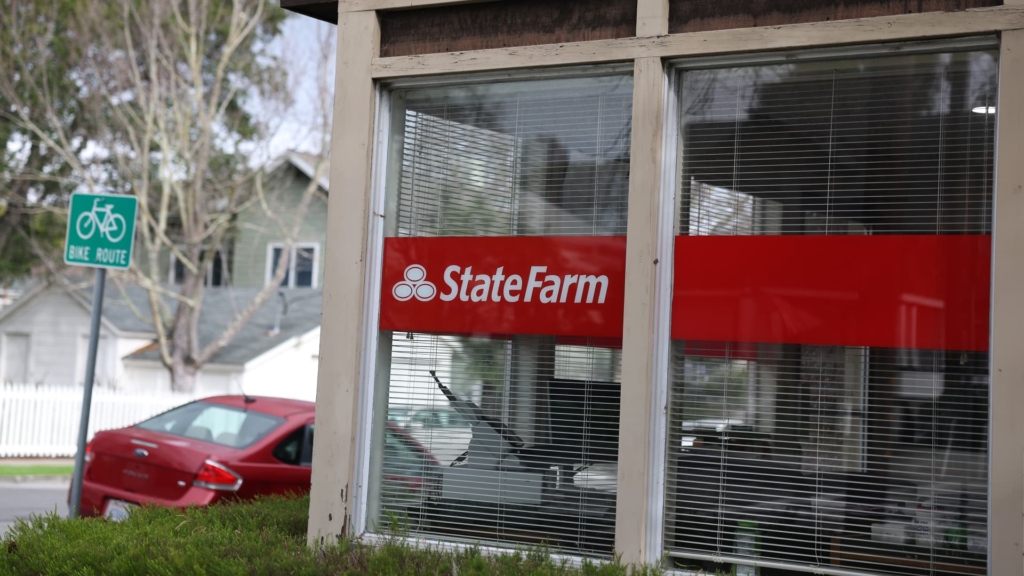This week, State Farm is advocating for a significant rate increase for homeowners in California as it faces a pivotal hearing that may shape the future of the insurer.
The largest property insurance provider in the state is seeking approval for an emergency rate hike, presenting the case that additional funds are necessary to strengthen its capital and address a troubling financial outlook in the wake of the catastrophic wildfires in Los Angeles.
State Farm General, the company’s California division, is making its arguments before an administrative judge in Oakland. This follows preliminary approval from state insurance commissioner Ricardo Lara for the emergency request.
The hearing is set to conclude on Thursday after three days of discussions.
State Farm’s situation is dire. An attorney from the California Department of Insurance likened its predicament to the Titanic, indicating that while the danger is evident, there may still be time to navigate away from disaster.
“If we don’t act, 3 million Californians will be left adrift without enough lifeboats,” attorney Nikki McKennedy cautioned.
The wildfires that swept through Los Angeles in January have led to damages estimated between $250 billion and $275 billion, making it the most expensive natural disaster in recorded history, according to AccuWeather.
With approximately 20% of the homeowners market in California, State Farm General currently manages nearly 3 million policies. The company has already disbursed over $2.75 billion across around 12,390 claims stemming from the wildfires and predicts direct losses from the events to be roughly $7.6 billion. Thankfully, reinsurance will help mitigate these losses to about $612 million.
Initially, the insurer sought approval from regulators for a 22% rate increase in February but later adjusted its request to a 17% hike. Additionally, State Farm is asking for a 38% increase in renter dwelling policies and a 15% rise for rental insurance.
On Tuesday, State Farm General’s attorneys noted the company is also considering sourcing $400 million from its parent organization contingent upon approval of the rate increases.
In February, S&P Global placed State Farm’s California subsidiary and its AA credit rating under “CreditWatch Negative,” referencing five years of poor underwriting performance and declining capital levels.
Before the Los Angeles wildfires, insurers in California were already grappling with significant losses due to an increase in the frequency and severity of natural disasters in the past decade. Insurance Commissioner Lara, who is elected rather than appointed, has been hesitant to authorize considerable rate increases for homeowners and auto insurance policies.
Furthermore, carriers are experiencing higher payout rates for claims and expenses than they are generating from premiums, according to the Insurance Information Institute. This trend has led many insurers to restrict new business opportunities or reduce their coverage options in the state.
In May 2023, State Farm halted the issuance of new homeowners insurance policies in California and later declared plans to not renew 72,000 policies, which encompass 30,000 for homeowners and 42,000 for commercial apartments, citing financial challenges and increasing risks.
During this week’s administrative hearing, economist David Appel characterized the overall insurance market in California as unsustainable and highlighted the significant deterioration it has undergone. He noted that the state’s last-resort insurer, the FAIR plan, has surged in growth but lacks sufficient capacity to accommodate the influx of homeowners seeking coverage after being dropped by their insurers.
The state has developed a “Sustainable Insurance Strategy” aimed at allowing insurers to incorporate catastrophe modeling and reinsurance costs when setting their rates. This initiative is also designed to simplify the approval process for these rates.
Janet Ruiz from the Insurance Information Institute asserted that the successful rollout of this strategy is vital for addressing the systemic issues that have led to the current insurance crisis, paving the way toward a more stable insurance market in California.
Appel remarked that if the 17% emergency rate increase State Farm is requesting is approved, it could lead to financial stability for the insurer.
While the California Department of Insurance supports the proposed rate hikes, advocacy group Consumer Watchdog is opposing the increase. Lead attorney William Pletcher contended that State Farm has not met the necessary legal standards to justify the rate change, noting the inconsistency in its proposal.
“While we appreciate the reduction from 22% to 17%, there still needs to be a solid justification for this rate increase, which State Farm has failed to provide,” he stated in a press release.


























